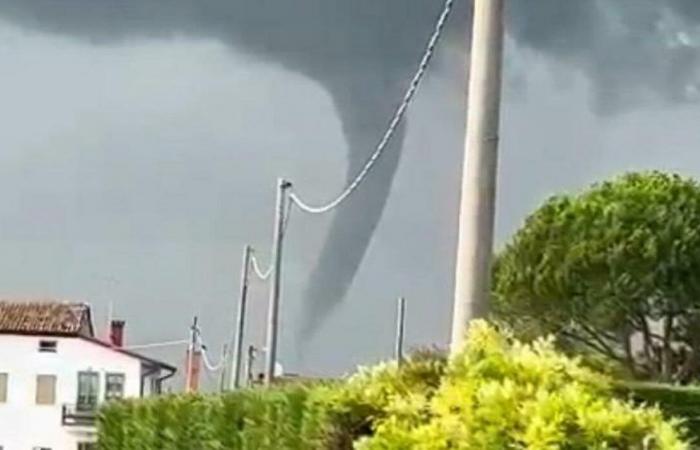
Increase in temperature up to 6 degrees in summer from now to 2100 in Friuli Venezia Giulia, with a +2.5 degrees already by 2050. The increase in temperature is slightly lower in the winter period, i.e. 5.3 degrees. A phenomenon that will be accompanied by repeated heat waves during the summer months And by intense rainfall at other times of the year, with a consequent increase in hydrogeological risk. The scenario emerges from the analyzes and projections from the Climate Change Study Center of Greenway and Ecogest, companies that deal with road and motorway greenery maintenance. A document which, given the projections, highlights the need to intervene to safeguard the road infrastructure present in the region. «Temperatures significantly higher than the annual averages have been recorded in the last period, with some peaks in the last 10 years, specifies the report -. Over the period 1961-2016, the average temperature increase was 0.3 degrees every 10 years, with a clearly accelerating trend.”
PRECIPITATIONS
The reading of local data and the evidence of what is happening at a global level lead the Center for Studies on Climate Change to predict an average increase in temperatures of up to around 5.3 degrees centigrade in winter, while in summer an increase could be observed up to almost 6 degrees. Precipitation is also growing, by as much as 20-30 percent by the end of the century. These changes in the region’s climate could lead to increased hydrological risk and slope instability. In the most critical areas, where climate change will overlap with hydrological change, largely due to human activities, the study continues. Torrential rains may lead to floods and inundationsand consequently to significant changes in the transport regime of solids and sediments in rivers, with consequent instability phenomena in riverbeds, slopes and riparian areas.
Climatic changes send bees into a tailspin: blooms blocked, they are without food. The production of acacia honey is at risk
REVERSE THE TREND
In low-lying areas that flow into lagoons or the sea, there may be further difficulties in evacuating flood flows in the event of high tide, aggravated by rising sea levels. These are numbers and scenarios that highlight how the maintenance of infrastructure networks is fundamental to making them resilient to the effects of climate change. «Solutions exist, and they are multiple, observes the president of the Climate Change Study Center, Valerio Molinari -. First of all, maintenance must be planned and remodulated by supporting it through solutions such as online cameras, weather stations, road load sensors, advanced telematic systems capable of regulating traffic flow and avoiding congestion. The choice of new greenery is also important, as it affects the state of conservation of road and motorway infrastructure.” Among the solutionsgoes on, “you can think of native plants and trees in the new plantsrationalization and adaptation of the planning of maintenance interventions, application of new study and control technologies to the maintenance of greenery, starting from drones and continuous monitoring of the state of vegetation”. Today the average annual temperature in Friuli Venezia Giulia it reaches maximum values between 14.5 and 15.5 degrees along the coastal strip, thanks to the moderating effect of the sea. A slightly different situation is recorded in the rest of the hilly and mountainous area of the region, where the temperature is profoundly influenced by the altitude and, above all, by the exposure and orientation of the mountain ranges. This also plays a very important role in the long-term temperature behavior.
© ALL RIGHTS RESERVED
Read the full article at
The Gazzettino
Temperature increase of up to 6 degrees in summer between now and 2100 in Friuli Venezia Giulia, with a +2.5 degrees already by 2050. The temperature increase in the period is slightly lower…





